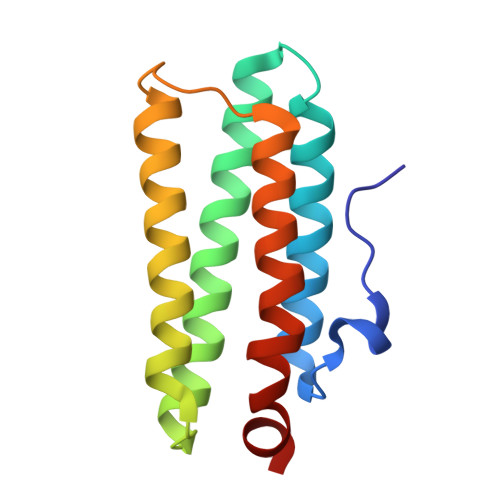The bacteriohemerythrin from Methylococcus capsulatus (Bath): Crystal structures reveal that Leu114 regulates a water tunnel.
Chen, K.H.C., Chuankhayan, P., Wu, H.H., Chen, C.J., Fukuda, M., Yu, S.S.F., Chan, S.I.(2015) J Inorg Biochem 150: 81-89
- PubMed: 25890483
- DOI: https://doi.org/10.1016/j.jinorgbio.2015.04.001
- Primary Citation of Related Structures:
4XPW, 4XPX, 4XPY, 4XQ1 - PubMed Abstract:
The bacteriohemerythrin (McHr) from Methylococcus capsulatus (Bath) is an oxygen carrier that serves as a transporter to deliver O2 from the cytosol of the bacterial cell body to the particulate methane monooxygenase residing in the intracytoplasmic membranes for methane oxidation. Here we report X-ray protein crystal structures of the recombinant wild type (WT) McHr and its L114A, L114Y and L114F mutants. The structure of the WT reveals a possible water tunnel in the McHr that might be linked to its faster autoxidation relative to hemerythrin in marine invertebrates. With Leu114 positioned at the end of this putative water tunnel, the hydrophobic side chain of this residue seems to play a prominent role in controlling the access of the water molecule required for autoxidation. This hypothesis is examined by comparing the autoxidation rates of the WT McHr with those of the L114A, L114Y and L114F mutants. The biochemical data are correlated with structural insights derived from the analysis of the putative water tunnels in the various McHr proteins provided by the X-ray structures.
- Department of Applied Chemistry, National Pingtung University, Pingtung 90003, Taiwan. Electronic address: kelvin@mail.nptu.edu.tw.
Organizational Affiliation:


















